Monstera Adansonii, also known as the Swiss Cheese Plant, is a popular and easy-to-care-for houseplant that belongs to the Araceae family. It is native to Central and South America, where it grows as an epiphyte in the rainforests.
The plant is characterized by its distinctive foliage, which features large, heart-shaped leaves with irregular holes that make it look like Swiss cheese. These holes and splits serve a functional purpose in the wild, they allow light to pass through the foliage as well as reduce wind resistance. In indoor settings, the unique appearance of Monstera adansonii makes it a popular choice for adding texture and interest to any space.
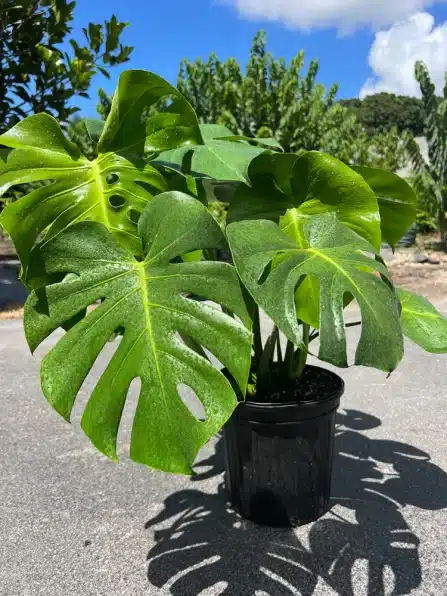
All About Monstera Adansonii
Monstera adansonii, also known as the Swiss cheese plant, is a popular indoor plant that belongs to the Araceae family. It is native to Central and South America and grows as an epiphyte in rainforests.
The plant's common name, Swiss cheese plant, comes from the unique appearance of its leaves having large holes or leaf fenestration. These holes serve a dual function in the wild, allowing light to pass through the foliage and reducing wind resistance.
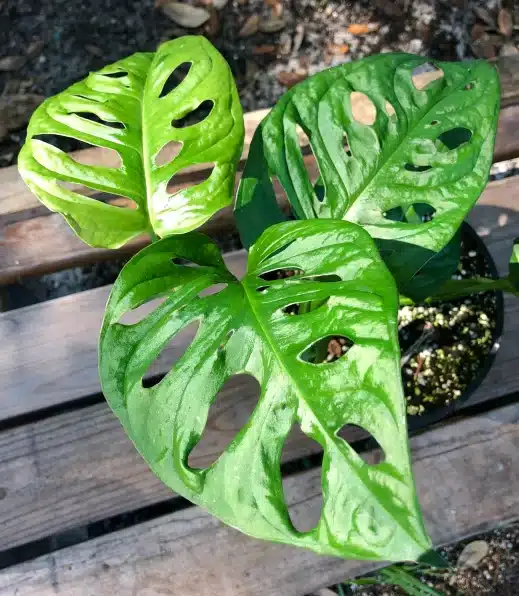
The leafy vines of Monstera adansonii can climb up to 8 feet in length and be as wide as 3 feet when grown in ideal conditions. The leaves are rich in green color and have a glossy texture, making this plant an appealing addition to your house plant collection.
Monstera adansonii is relatively easy to care for and makes an excellent houseplant for beginners. It prefers bright, indirect light, but can tolerate lower light conditions. It also needs well-draining soil that is kept consistently moist but not waterlogged. Overwatering can lead to root rot, so it's essential to avoid letting the soil become too soggy.
Propagation of Monstera adansonii is easily done through stem cuttings. Simply cut a stem with a few leaves and nodes and place it in water until it develops roots. Once the roots have formed, the cutting can be planted in the soil, and a new plant will begin to grow.
In addition to its striking appearance, Monstera adansonii is also known for its air-purifying qualities, making it an excellent addition to any home or office. It can help remove toxins from the air, including formaldehyde, benzene, and trichloroethylene.
Monstera adansonii is a unique and easy-to-care-for houseplant that can add texture and interest to any space. With its distinctive perforated leaves and air-purifying qualities, it's easy to see why this plant has become so popular among plant enthusiasts.
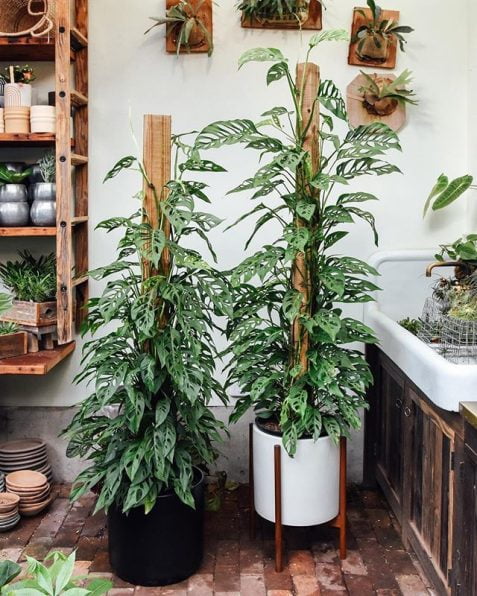
Monstera Adansonii: The Basics
How to Take Care of Monstera Adansonii
As with any house plant, even the low-maintenance plants like Monstera Adansonii there are a few things that you can do to care for your plant. The basic requirements of the soil, watering, fertilizing, pruning, and propagating are covered below.
Monstera Soil Needs
Monsteras are a tropical Aroid species and would do well in a mix of soil that mimics their native environment. You can find potting mixes specifically made for Aroids.
These blends of soils contain chunkier materials, such as orchid bark as well as, perlite, coco coir, worm castings, peat, or sphagnum moss.

So basically, you will want chunky, well-draining, moisture-retaining soil to grow your Swiss cheese plant in.
How Often to do You Water a Monstera Adansonii?
Monstera adansonii prefers consistently moist soil, but it's important to avoid overwatering, which can lead to root rot. The frequency of watering will depend on various factors such as the size of the plant, the size of the pot, the temperature and humidity of the environment, and the type of soil mix used.
As a general rule, it's a good idea to check the soil moisture level regularly by sticking your finger about an inch into the soil. If the soil feels dry at this depth, it's time to water. In most cases, Monstera adansonii will need to be watered about once a week, but this may vary depending on the factors mentioned above.

It's important to avoid letting the soil become completely dry or waterlogged. If the soil is allowed to dry out completely, it can stress the plant and cause damage to the leaves. On the other hand, overwatering can lead to root rot, which can be fatal to the plant. If you're unsure whether your Monstera adansonii needs watering, it's always better to err on the side of underwatering and wait a day or two before watering again.
How Much Light Does a Monstera Adansonii Need?
Monsteras prefer bright, indirect light but can tolerate dimmer areas. The ideal spot would be in a north or south facing window where it can receive bright indirect light most of the day. Insufficient light can affect the leaves, causing leaf curl, or yellowing or browning edges and when you notice these issues it's better to look to adjust the light for the remedy.

Too much sun can also be detrimental to this plant. If you notice dark or black spots or burned areas on the leaves, it can be that it is getting too much direct sun. This plant can handle early morning and evening sun, but moderation is the key.
Monstera Temperature & Humidity Needs
Monstera Adansonii prefers a warm and humid environment, similar to its natural habitat in the rainforests of Central and South America. It does best in temperatures between 65-80°F (18-26°C) and relative humidity of 60 – 80%.
If you live in a dryer area, low humidity can be an issue. The plant can develop brown tips or edges on its leaves, which can be a sign of dehydration. To increase humidity around the plant, you can mist it regularly with a spray bottle or place a tray of water and pebbles near the plant, being careful not to let the bottom of the pot sit in standing water.
During the winter months when indoor heating can dry out the air, it's especially important to maintain adequate humidity levels for your Monstera Adansonii. You can also consider using a humidifier to keep the air moist around the plant.

It's worth noting that while Monstera adansonii can tolerate a range of temperatures and humidity levels, it may not thrive in extremely dry or cold conditions. If you notice that your plant is struggling, it may be helpful to adjust the temperature or humidity levels in its environment.
Fertilizing the Monstera Plant
Fertilizing your Monstera Adansonii can help promote healthy growth and foliage. During the growing season (spring and summer), you can fertilize your plant every 2-3 months with a balanced, water-soluble fertilizer. Depending on the fertilizer the schedule can change.
A half-strength fertilizer can be applied every 2 weeks during the growing season.
When choosing a fertilizer, look for one that contains equal amounts of nitrogen, phosphorus, and potassium (e.g. NPK 20-20-20 or 10-10-10). Dilute the fertilizer according to the instructions on the label and apply it to the soil around the base of the plant. Depending on the dilution ratio you may be fertilizing more often or less often for a time-release fertilizer.

It's important not to over-fertilize your Monstera adansonii, as this can lead to salt buildup in the soil and damage to the roots. If you notice that the tips or edges of the leaves are turning brown or yellow, this may be a sign of fertilizer burn, and you should reduce the amount or frequency of fertilization.
During the winter months when the plant is not actively growing, you can reduce or suspend fertilization until the following spring when growth resumes.
How do you Prune a Monstera Adansonii?
Pruning is an important part of Monstera Adansonii care, as it helps promote bushier growth and maintain the overall health of the plant. Here's how to prune your Monstera Adansonii:
- Identify the stems or leaves that need to be pruned. You may want to remove any dead or damaged leaves or cut back leggy or overgrown stems.
- Use a clean, sharp pair of pruning shears or scissors to make a clean cut just above a node (the point where a leaf joins the stem). Cutting above a node will encourage new growth to emerge from that point.
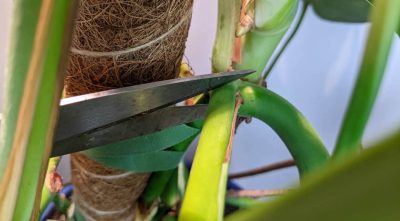
- If you're pruning back a stem that has become too long or leggy, you can cut it back to just above a node at the desired height. This will encourage new growth and help the plant develop a bushier shape.
- After pruning, it's a good idea to sterilize your pruning tools with rubbing alcohol or a solution of one part bleach to nine parts water. This will help prevent the spread of disease or pests.
- You can also propagate your Monstera adansonii by taking stem cuttings from the pruned stems. Simply cut a stem with at least one node and one or two leaves and place it in water or soil to encourage root growth.
Regular pruning will help keep your Monstera adansonii looking its best and promote healthy growth.
How do You Propagate a Monstera Adansonii Plant?
Monstera Adansonii is a relatively easy plant to propagate, and there are several methods you can use:
- Stem cuttings: Take a stem cutting that is at least 6 inches long and has at least one node (where a leaf meets the stem). Remove any leaves from the lower half of the cutting, dip the cut end in the rooting hormone (optional), and plant it in moist potting soil. Keep the soil moist and the cutting in a warm, bright spot, and roots should develop within a few weeks.
- Water propagation: Take a stem cutting as described above, but instead of planting it in soil, place it in a jar or vase of water. Change the water every few days and keep the cutting in a bright, warm spot. Roots should develop within a few weeks, at which point you can transplant the cutting into soil.
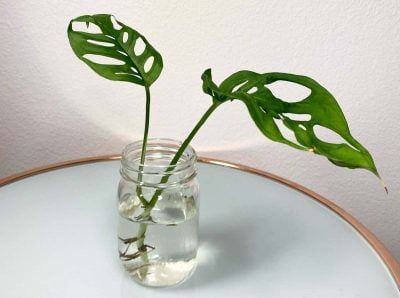
Regardless of which method you choose, it's important to keep the new plant in a warm, bright spot and to keep the soil moist (but not waterlogged) until the new plant has established roots.
Monstera Adansonii Varieties
Monstera Adansonii is a member of the Araceae family, which includes a number of other popular houseplants. Here are a few examples:
Monstera Deliciosa: Also known as the Swiss cheese plant, this is a larger and more common Monstera species than the Adansonii. It features large, fenestrated leaves and has similar care requirements to the Monstera Adansonii.

Philodendron Hederaceum: This plant is commonly called the heartleaf philodendron and has a similar appearance to the Monstera Adansonii, with small, heart-shaped leaves. It is also relatively easy to care for and can be propagated by stem cuttings.
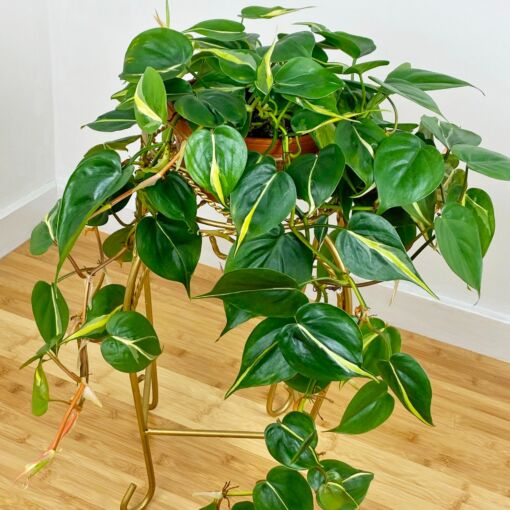
Epipremnum Aureum: This plant is commonly known as pothos or devil's ivy and has similar care requirements to the Adansonii. It features smaller, heart-shaped leaves and is also easy to propagate.
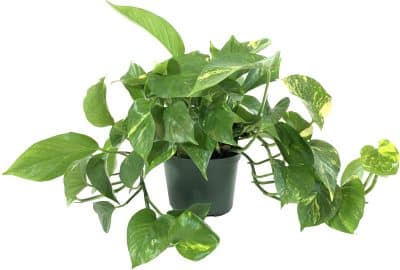
Syngonium Podophyllum: Also known as the arrowhead plant, this plant has a similar appearance to the Monstera Adansonii, with arrow-shaped leaves. It is relatively easy to care for and can be propagated by stem cuttings.
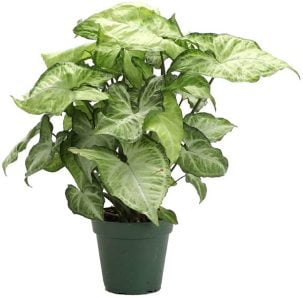
While these plants have similar care requirements to the Adansonii plant, it's important to note that each plant has its own unique characteristics and needs. Be sure to research the specific care requirements for each Monstera plant to ensure they thrive in your home.
Common Monstera Adansonii Problems
Monstera Adansonii is a relatively easy plant to care for, but like any plant, it can develop problems. Here are some of the most common issues that Monstera Adansonii owners may encounter and how to fix them.
Growing
Growing problems can stem from several issues or a combination of them. Overwatering can stunt the growth of your plant. The waterlogged root system will begin to rot and this will cause growth issues.
Here are a few more issues that can cause growing problems:
- Too much or not enough light
- Temperature
- Under or over-fertilizing
- Undersized pot
- Maintenance neglect such as pruning
Diseases
Monstera Adansonii is generally a healthy plant, but it can be susceptible to some diseases. One common issue is root rot, which can occur if the plant is overwatered or if it is planted in soil that doesn't drain well. Symptoms of root rot include yellowing leaves, wilting, and a mushy, foul-smelling stem.

To prevent root rot, be sure to plant the Monstera Adansonii in well-draining soil and avoid overwatering. Another potential issue is bacterial leaf spot, which can cause dark, water-soaked spots on the leaves. This can be treated by removing any infected leaves and avoiding overhead watering.
Pests
Monstera Adansonii is also susceptible to a few common pests. One of the most common is spider mites, which are tiny pests that can cause yellowing leaves and webbing on the plant. These pests can be treated by washing the plant with a strong stream of water, or by using insecticidal soap.
Another potential pest is mealybugs, which are small, white insects that can cluster on the leaves and stem. These pests can be treated with insecticidal soap or neem oil. Finally, scale insects can also be an issue, causing yellowing leaves and a sticky residue on the plant. These pests can be treated by scraping them off with a soft brush and then washing the plant with a strong stream of water.
Other Things to Know About Monstera Adansonii
- It has many nicknames: In addition to “Swiss cheese vine,” Monstera Adansonii is also commonly called “five holes plant,” “monkey mask,” and “Adanson's Monstera.”
- It is native to Central and South America: The Adansonii plant is found in tropical rainforests in Central and South America, including countries like Mexico, Colombia, and Panama.
- It is an epiphyte: Like many other plants in the Araceae family, Monstera Adansonii is an epiphyte, meaning it grows on other plants rather than in soil. In the wild, it often grows on trees and uses its bark for support.
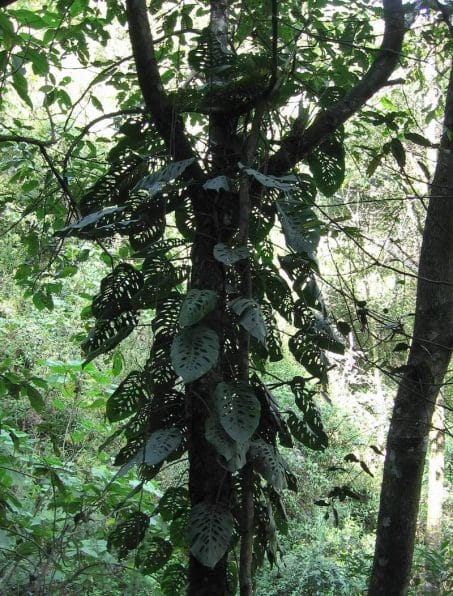
- Its leaves change as it matures: When Adansonii is young, its leaves are small and heart-shaped with solid green coloring. As the plant matures, it develops characteristic holes and splits in its leaves that give it its “Swiss cheese” appearance.
FAQs
Are Monstera Adansonii easy to care for?
Yes, Monstera Adansonii is generally considered to be an easy plant to care for, even for beginners. It prefers bright, indirect light and consistent moisture, but can tolerate a range of conditions. As long as it is planted in well-draining soil and watered appropriately, it should grow well.
How fast does Monstera Adansonii grow?
The growth rate of Monstera adansonii can vary depending on the conditions it is grown in, but it is generally considered to be a moderately fast-growing plant.
Do Monstera Adansonii like to climb or hang?
Monstera Andoconii is a climbing vine but can be left to hang from a basket. You can support your vine on a moss pole or trellis.
Is Monstera Adansonii toxic to cats?
Yes, Monstera Adansonii is toxic to cats if ingested. The plant contains calcium oxalate crystals, which can cause irritation and swelling in the mouth, throat, and digestive tract if consumed.
Symptoms of poisoning may include drooling, vomiting, difficulty swallowing, and reduced appetite. If you suspect that your cat has ingested any part of a Monstera Adansonii plant, it is important to contact your veterinarian immediately.
Why is my Monstera Adansonii turning yellow?
Yellowing leaves on a Monstera Adansonii can be a sign of several possible issues. Here are some common reasons why a Monstera adansonii plant may have yellow leaves:
- Overwatering: Too much water can lead to root rot and cause the leaves to turn yellow and droop. Check the soil moisture level and make sure the plant is not sitting in standing water.
- Underwatering: On the other hand, if the soil is too dry, the plant may not be getting enough water, which can also cause the leaves to turn yellow and crispy. Water the plant thoroughly, and make sure the soil stays evenly moist.
- Lack of sunlight: Monstera Adansonii plants prefer bright, indirect light, and too little light can cause the leaves to turn yellow and drop. Move the plant to a brighter location, but avoid direct sunlight, which can scorch the leaves.
- Nutrient deficiency: A lack of essential nutrients, such as nitrogen or iron, can cause the leaves to turn yellow. Consider adding a balanced fertilizer to the plant's soil, following the package instructions carefully.
- Pest infestation: If the yellowing leaves are also showing signs of damage, such as holes or spots, the plant may be infested with pests, such as spider mites or mealybugs. Treat the plant with an insecticidal soap or oil, following the instructions on the product label.


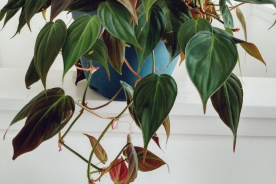
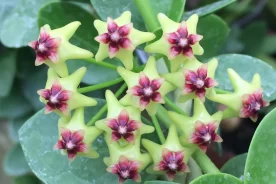

No Comments